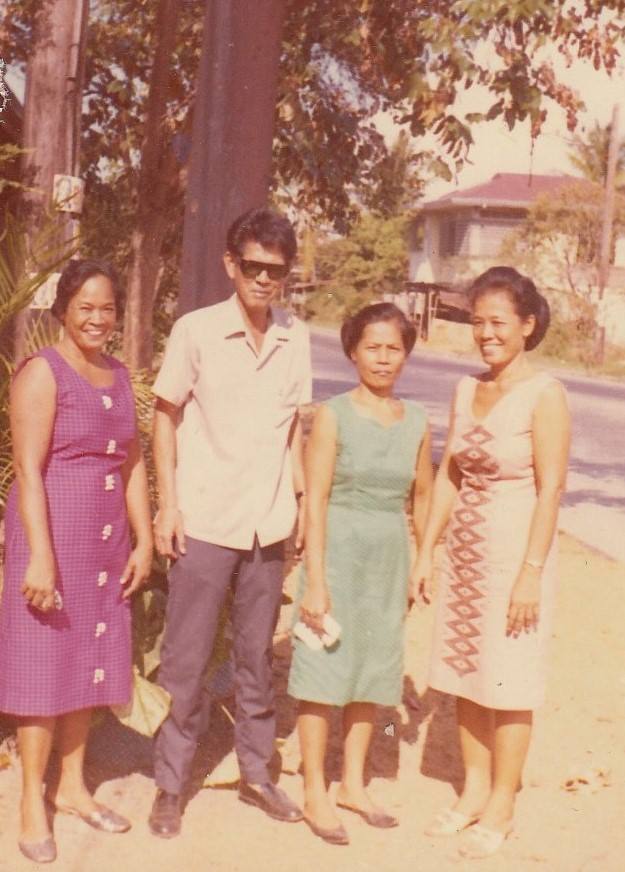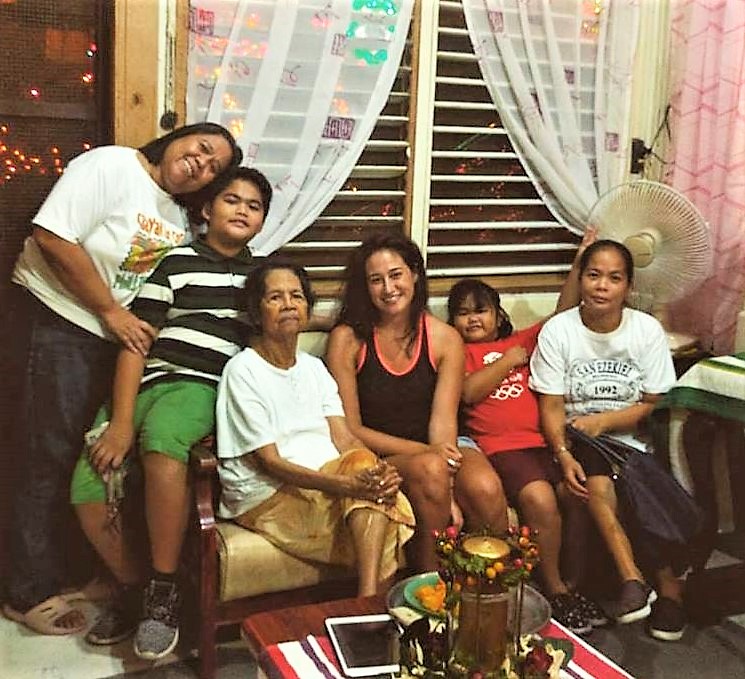A past-due pilgrimage

I’m going to the Philippines in November for the first time. It’s past time. The scenes in my first book When the de la Cruz Family Danced that were set in the Philippines were wholly imagined. They could’ve been based on first-hand experience if four decades ago I’d chosen differently
When I finished college, my father offered to buy me a plane ticket to Manila. I declined. I had made plans to spend the summer in Mexico learning Spanish. I had saved for months. My mind was made up. My heart was set on Mexico. The Philippines seemed far and foreign, while Mexico was close and more familiar, more accessible and, I confess, more desirable to me at the time.
I’m Filipino and Mexican, and though I often felt I never quite belonged to either community because of being mixed, it was easy to feel a greater affinity to things Mexican. We lived fifteen miles from the U.S.-Mexico border. My grandmother who had emigrated from Mexico in the 1920s spoke only Spanish, so the sounds, if not always the meanings of the words, were familiar to me. Tamales were our celebratory food and menudo made a frequent appearance on Sundays. The background music of my childhood included boleros and mariachi standards mixed in with Motown and the Beatles.
And yet, we were not without Filipino ways. Steamed white rice was a staple at dinner each night and we welcomed pancit and lumpia for special occasions. My mother hired the old Filipino piano teacher who gave lessons to the other Filipino kids in our neighborhood. The lessons ended when it became clear we didn’t have the musical talent of the other Filipino kids.
 I seldom heard my father speak Tagalog and he rarely spoke of his life in the Philippines. I know that he wrote regularly to his two sisters in Manila, and in 1970 he finally made his first return trip in over twenty years, probably fairly certain it would be his last. When he died in 1993, so did the connection to the family in the Philippines. None of us – my mother or we children – had ever had any direct communication with my father’s sisters and had only seen a few photos of them. They were strangers to us. And we to them.
I seldom heard my father speak Tagalog and he rarely spoke of his life in the Philippines. I know that he wrote regularly to his two sisters in Manila, and in 1970 he finally made his first return trip in over twenty years, probably fairly certain it would be his last. When he died in 1993, so did the connection to the family in the Philippines. None of us – my mother or we children – had ever had any direct communication with my father’s sisters and had only seen a few photos of them. They were strangers to us. And we to them.
When I declined my father’s offer to send me to the Philippines all those years ago, I didn’t think it would take me so long to get there on my own. There was always a reason not to go: money, time, work, family responsibilities. I might’ve delayed further if not for one of my daughters.

Photo courtesy of James Lazarra
Natalie traveled there last year soon after a brief trip to Mexico as part of her self-directed, cultural heritage tour. In Millennial fashion, she had used social media to find clues to the whereabouts of our relatives in the Philippines. She found James Lazarra, a local historian in Las Piñas, my father’s hometown. James tracked down my father’s one surviving sister and her family in nearby Muntinlupa, and the first reunion in forty-six years of a U.S. Miscolta and the Miscoltas in the Philippines occurred last December.
This year Natalie was determined to go to Manila again. “Are you coming?” she asked me. I was unable to go last year because my second book had just come out and I had months of events ahead. And even though this year has been busy with travel for book and writing-related events, which meant time off from the day job, I knew I had to go. I needed and wanted to go.
So Natalie will show me the sights – Intramuros, Luneta, the bamboo organ of Las Piñas. We’ll hike the volcano in Tagaytay. And she’ll introduce me to my aunt and cousins in Muntinlupa.

Photo courtesy of Natalie Miscolta-Cameron
Photo of Intramuros (top of page) by Natalie Miscolta-Cameron